Reviews
Walking Down Broadway
Erich von Stroheim, Alfred Werker, and Raoul Walsh
USA, 1933
Credits
Review by Brynn White
Posted on 02 September 2009
Source Vintage Film Buff DVD
Categories Oh, the Depravity! The Cinema of Erich von Stroheim
And then there was sound. Erich von Stroheim entered Hollywood’s technological dawn with a bruised reputation and a paltry supply of options. Deemed a “problematical footnote” (Jonathan Rosenbaum) in the von Stroheim oeuvre, Hello, Sister! is a mongrel artifact, a retooled version of von Stroheim’s completed Walking Down Broadway. The subsequent failure of this curious hybrid of von Stroheim artistry and studio whitewashing was the resounding nail in the coffin of his directorial career. He would never again get a shot at shaping the new-fangled medium.
Addressing Hello, Sister! is a heady undertaking, charting von Stroheim’s brow-beating tour through the hostile Hollywood cogs and the many conflicting accounts (and trade paper reports) of what happened and why. It involves an exploration of von Stroheim’s filmography in order to glean what of his directorial prowess survives the re-working of the script originally written by him and Leonard Spigelgass and re-shoots by up to three other directors (the film was released without any directorial credit, The New York Times falsely attributed it to Alan Crosland).
It is also an illuminating glimpse into the fluidity of film history. No surviving print of Hello, Sister! was thought to exist until William K. Everson excavated one in the early 70s (Walking Down Broadway, alas, is long gone). It had been heretofore assumed to possess little of the mad genius of the silents. In his 1975 book Stroheim: A Pictorial Record of His Nine Films, Herman G. Weinberg echoes Lotte Eisner’s fervent declaration that “There is nothing of von Stroheim in Hello, Sister!,” tossing it aside as a re-written, re-made, and re-baptized corruption of Walking Down Broadway. Far more diligent analysis was conducted by von Stroheim scholar Richard Koszarski and Everson himself. In a first impression treatise for Sight & Sound, Koszarski estimated the surviving product as 75% von Stroheim, and in original Everson program notes he less confidently suggests a 60% EVS-factor (an intriguing, and somewhat humorous, conflation of mathematics and cinematic academia). Neither believe it a lost masterpiece, but worthy of inclusion into the von Stroheim canon. They are more generous than Jonathan Rosenbaum, who later dismissed his impressions of Walking Down Broadway in pure form and denigrated Hello, Sister! to mere study in von Stroheim’s adaptation to sound. Everson includes a bold addendum on the Ins and Outs of auteurism: “If we didn’t know that von Stroheim had anything to do with it, we’d be praising its many inventive touches instead of trying to pick holes in it and blame it for not being a masterpiece. Or conversely, if we knew for a fact that von Stroheim directed every foot, many of us would be lauding it to the skies and explaining that it was a ‘misunderstood’ masterwork. Film criticism can never be objective perhaps; but film history should be.”
Everson and Koszarski neared this total objectivity with a landmark analysis of the production stills all hailing from the von Stroheim shoots in a 1975 issue of Film Comment. (Similar activity has been performed by Weinberg in book-form on Greed and The Wedding March; TCM has screened a breathtaking near-four hour version of Greed combining the original footage with production stills and intertitles based off of the original script and Stroheim’s copious notes.) The eighty reprinted stills up the ante on proclamations of original intention, but contradict some of their original deductions and suggest less of von Stroheim prevailed. This study, however, provides an as-close-to-definitive-as-possible account of the narrative designs of EVS.
For clarity’s sake, it is best to employ von Stroheim’s favored cross-cutting technique in recounting Hello, Sister! and Walking Down Broadway, the goal being to convey the story Stroheim intended and the story it became. The exposition is not von Stroheim: a dithering drunk raves about his pet dynamite to his neighbors, Minna Gombell’s slinky, ambivalent blonde Mona and ZaSu Pitt’s gangly, head-shaking Millie. The two take cover in the apartment of the film’s heroine Peggy (Boots Mallory). Millie longs for romance and a night on the town but Peggy, a vision of true blonde innocence, expresses hesitancy at her suggestion they just go out and “walk down Broadway” and see what happens. There is some juicy Pre-Code dialogue, as when Millie describes her once upon a time sexual encounter, “He made a pass at me — and I didn’t duck!” and when Mona, obviously a dame that’s been around the block more times than once (and often paid for it), chastises Peggy, “These are tough times, no girl has a right to hoard.”
And then, the eponymous walk down NYC’s Great White Way, von Stroheim’s intended beginning. Two men slyly follow Peggy and Millie down the street. Mac (Terrance Ray) and Jimmy (James Dunn) are, as has been noted by Koszarski, antecedents of Greed’s Marcus and Mac, and the Stroheim tradition of the Jekyll and Hyde male pairings beginning with Blind Husbands. It is obvious they will both take preference with Peggy but the brash Mac, a quintessential Stroheim embodiment of male menace, seizes her arm first. The shy Jimmy is left to adoring glances from afar and the disquieting conversation of Millie, whose notion of an opening line is “Do you like funerals?”
At Millie’s encouragement, the boys whisk the girls away to Coney Island. While its tempting to attribute the kinetic and playfully grotesque footage — cackling dwarves beating customers with bats and funhouse air vents shooting the skirts up above the ladies’ heads — to von Stroheim, the principal cinematographer James Wong Howe recalls shooting on location much later with the great Raoul Walsh. Howe had a von Stroheim adventure during the following dancehall scene when EVS motioned towards a wheeled stand, “Put your camera on top of this and I can waltz with these people.” Much of this footage, of Mac groping Peggy as she looks longingly towards Jimmy, still enduring more of Millie’s chatter — she’s “just a fool” for fortune-telling and bloody accidents — is gone. Surely it was a sophisticated, fluid establishment of the character dynamics that drive the narrative. Only a brief exchange between Peggy and Jimmy, alone at last, makes the final cut. A zesty moment where Mac cuts in and gives Jimmy the middle finger (a favorite lost moment of Pre-Code lore) was later erased.
While returning home the group witnesses a dog get hit by a car, Millie’s uncontrollable hands twitch in the corner of von Stroheim’s frame as Jimmy and Peggy bend down to rescue it. Unable to handle all the excitement, Millie proceeds to trip into a sewer ditch. Literally thrown into the unsanitary depths of the metropolis she melodramatically cries “I’m drowning!” until Jimmy’s valiant rescue. In the von Stroheim cut, Millie, vulnerably exposed, showers as Jimmy and Peggy attend to the injured dog, the former agreeing to keep it as Mac snivels in the corner “Sure! We ain’t got enough fleas!” Peggy tenderly comforts Millie upon her antiseptic reemergence. Quickly shedding her embarrassment, Millie starts to introduce the boys to her pet turtle “Lady Godiva,” but Mona enters and saves her from herself. Mac recognizes her from a deodorant ad and is temporarily sidetracked from his shameless pursuit of Peggy. They proceed to look at his collection of vulgar postcards together. “Grapenuts” (Mac’s new nickname for Millie) joins Jimmy in the kitchen and effusively discusses another palooka love of hers — pickles. Jimmy bows out quickly, much to her hysteric disappointment, with the intent of bringing Peggy food after she has stolen away to her room, having had enough of Mac’s advances.
What follows is pure von Stroheim and the most masterful sequences of Hello, Sister!; an enticing taste of sound-era Erich von Stroheim that also harkens back to the visual power of his silent roots. Finally able to shed the facades of group socializing they discuss their inexperience and discomfort with picking up strangers and quickly realize they are both new to the city, intimidated but invigorated by its promise. Jimmy sympathetically notes that she does not have a window, leading Peggy to climb atop the kitchen table, revealing her skylight and spectacular view of the town. The two stand with their heads cocked out, simultaneously dwarfed and framed by the skyline on the horizon. The sounds of the city accompany their inevitable kiss as a stray cat slinks along the rooftop. The elapsed time between their cityscape serenade and the doorframe kiss goodbye is left notably ambiguous.
The night’s still young for Mac, who slips from Mona’s apartment to Peggy’s room as she prepares for bed. Expressionistically lit, his attempted rape of her in the closet is terrifying (evoking McTeague’s murder of his wife in Greed) and further enhanced by the cross-cutting to Mona, who has realized the dime-store fakery of Mac’s “diamond” ring in exchange for her services. She hears Peggy’s screams and slithers — rather than an appropriate run — up the staircase. Boa-clad, rabid-eyed Mona takes a swing at Mac, who slaps her back. They exchange blows in a shocking rampage of unbridled physicality down the stairs, with Mac eventually shoving her into her bedroom and slamming the door behind him. This bold cocktail of a fairy tale courtship and audacious sadomasochistic bout miraculously survives the final cut, a centerpiece pairing that waves the von Stroheim flag high.
The day after does not. Millie tearfully forgives Peggy for nabbing the mutual object of their affections and they leave for the seed packing factory. The scenes of their blue-collar workplace were abandoned, robbing the characters of an important context to their daily lives. This is only von Stroheim’s second film concerning the proletariat (the first of course being Greed) and the sure-to-be visually rich depiction of the “Club footed nasty old Foreman, and cross-eyed ugly assistants walking up and down watching girls — foreign types” (Koszarski and Everson’s Scene #48) is left to our imaginations. Peggy faints on the job, apparently not for the first time. As the cashier hands Peggy her paycheck he announces it as her last and heartlessly wishes her a Merry Christmas. She promptly heads to the doctor.
Hello, Sister! replaced these events with the continuance of Peggy and Jimmy’s courtship, dully shot on a ferry ride home from a day in New Jersey. They redundantly discuss their love, Peggy’s exhaustion/fainting spells, and Jimmy’s money-making schemes, a lazy elision of Stroheim’s tangential plot involving Mac and Jimmy and a bogus lottery ticket (Greed resonances again). Their playdate concludes at Peggy’s doorstep and is perfunctorily interrupted by the dynamite shenanigans of the boffo neighbor.
Von Stroheim clearly helmed Peggy’s high-angled search for the doctor amidst a staggering list of building occupants and services. (It mirrors Vidor’s cosmic glance up the skyscraper in his common man in the big city opus, The Crowd). It is one of many intimations of the macrocosmic scope of Manhattan, and this small but significant tale of small but significant people (von Stroheim sub-headed his original script “An Inconsequential Story concerning small people”). There is always a strong sense of the masses, the stream of extras coming and going flood the backdrop of every street scene.
Oddly, the doctor’s office segment does not appear in the Film Comment assemblage. The doctor informs Peggy that she is “going to be a…” the film awkwardly bleeps out the word “mother,” a laughably failed masking of the intimations of premarital sex. The abortion option is alluded to but discarded as the doctor directs her attention to his mural of The Last Supper and spins a tale of Leonardo Da Vinci’s illegitimacy and the gift of even unwed motherhood. This story continues in voiceover as the camera zooms in slowly upon the central figure of Christ, such religious imagery a frequent fascination for von Stroheim. This standout scene either indicates the lack of complete dependability on Everson & Koszarski’s storyboard, or that von Stroheim’s replacement committee was not without some creative flourish (in all likelihood, the former).
Distraught, Peggy informs an elated Jimmy that they must get married right away and they announce the news to Millie and Mona. The surviving scene doesn’t match the von Stroheim production still bordered with gaudy Christmas tinsel. (This décor is a conspicuous mise en scene element for the remainder of the film. In Greed, Christmas is ironically proclaimed the day that “shall change all griefs and quarrels into love.” Instead, it serves as the setting for the grisly spoucicide.) But it is clearly von Stroheim’s hand at work, as it focuses on the reaction of Millie, first the tremor of Pitts’ hands as she irons and then upon her wide-eyed expression, leaving her clothing to scald under the iron, abandoned in her maudlin reverie.
Jimmy meanwhile bounds into the office of a bank superior to demand a raise on the grounds of his ambition and impending nuptials. Von Stroheim’s coverage remains, notable for Jimmy’s naïve but infectious ebullience in the throes of young love and the von Stroheim presence of fate; the bank vice president off-handedly agrees to his small-peanuts promotion just to rid him of the scene once a colleague arrives. The ever-reliable Mac pisses on the parade. He soothes his ego damage with insinuations about Peggy and himself, maliciously delaying Jimmy’s appointment with her at the marriage bureau. The camera pans from the closing license application windows to a withered Christmas tree, and finally to a stricken and solitary Peggy. In a nice von Stroheim touch, Peggy and Jimmy simultaneously exit the respective buildings through revolving doors of Fate. Peggy plunges into the rainstorm as a Salvation Army Santa claps his holiday bell.
Jimmy doesn’t find Peggy at home but encounters Millie, who awkwardly assures him that Peggy must be shopping for wedding garments, “Secret things you wouldn’t know. But you’ll find out.” She senses Jimmy’s dubiousness over Peggy’s character and commitment and fans the flames of Mac’s lies. Angered by his dismissal that she “wouldn’t understand,” she viciously retaliates. Millie claims that despite her homely appearance she has experienced a long line of suitors, naming Peggy as cohort in these fantasy pick-ups. Jimmy strikes her, storms into the streets, and stumbles upon Peggy, too distraught to use her umbrella in the pouring rain. He hammers off accusations, punctuated by the malevolent cackle he has learned from Mac. He leaves little air for a defense. It’s a beautifully rendered scene, evocative of the power of silent cinema; the one-way traffic barrels in Peggy’s direction as if the city itself is fighting against her.
The film muddles as it nears the hack-job ending, the most defiant betrayal of von Stroheim’s original conception. Peggy’s sobs fill Millie with remorse. She immediately sets out to correct her wrongs with Mona trailing behind, eager to raise hell with the boys. (The final cut robs of us yet another gleefully violent exchange between Mona and Mac.) The building erupts in flames and upon realization that Peggy is inside, Mac and Millie confess their lies and urge Jimmy’s heroic action. The melodramatic music swells as Jimmy opens the skylight and liberates Peggy, too distracted by her inconsolable moping to react to the danger at bay. The re-cut offensively capitalizes on von Stroheim’s finely crafted birthplace of romance; Peggy and Jimmy reunite by the skylight in a generic exchange of apology and professions of undying love. Cue credits. Oh, and of course it was the decidedly real dynamite in the basement that did it.
This ending, mocked as “that stock finale of cinematic antiquity” (in The New York Times review), is of course the result of severe tampering on Fox’s part. It evolved significantly from their reduction of ZaSu Pitts’ character Millie. Pitts was reigning queen of the Stroheim troupe, star of Greed and The Wedding March; “the greatest psycho-pathological actress in the American cinema” the auteur claimed. He originally named the Millie character ZaSu, and affectionately elaborated “ZaSu is a very complicated and interesting character, in love with death. She goes to funeral parlors on Saturday afternoon to have a good cry at some stranger’s last rites. In short, a psychopathic case.”
This character type is course the one closest to von Stroheim’s heart and he conceived the ZaSu character as Walking Down Broadway’s romantic martyr. She sets accidental fire to the building in an agonized oven-fumed suicide attempt following her episode with Jimmy. Peggy was to have fled to Grand Central, but stopped in her tracks by a headline announcing the fire (juicy news travels fast). She finds Jimmy at the hospital awaiting a report on the extent of Millie’s burn injuries. Told it is a hopeless case, they attend Millie’s bedside. She is shrouded in bandages, with only her face exposed in a nun-like evocation of Pitt’s dental surgery in Greed when McTeague falls in love with his sedated patient — a chilling conflation of Eros and Thanatos. Von Stroheim scripted a characteristically grandiose death scene, in which Millie weakly straightens out her lies and pleas for the reunion of the two lovers, so that she is not “dyin’ for nothin” (Scene #77). Jimmy fetches a Christmas tree for her room and gives her the present originally intended for Peggy, who instead gets a ring on her finger. Assured of their matrimony, Millie “feels like the lights have been turned off. Her eyes widen in ecstatic paroxysm as if she couldn’t believe her senses” (Scene #79) and dies screaming the name of Jesus as a procession of candle-bearing nurses march through the hallway. The city again provides the soundtrack, as organ music drifts from a nearby church, supplying Pitts’ second on-screen yule tide funereal hymn.
But the turtle-petting, hunchback-befriending, blood and pickle-loving Millie was too much for Fox executives, who could hardly stomach such an offbeat characterization, much less its celebration. They scrapped as much nuance as they could, chiefly her hysteric interactions with Jimmy and pathos-laden exchanges with Peggy. Rumors of a homoerotic undertone to the relationship between the two girls is not totally out of bounds for von Stroheim, but probably more a case of wishful thinking on the part of Pre-Code vice revelers. The re-shot opening scene does its best to frame Millie as a comedic presence; she tells Peggy of her single sexual encounter: “He did the strangest thing, we stepped into the light, he took one look at me and ran!” The dynamite-toting drunk must have stumbled in from the Fox set of Raoul Walsh’s Me and My Gal. While his comic relief perfectly served Walsh’s gum-chewing masterpiece of jaunty genre hopping, his awkward, starkly lit appearances in Hello, Sister! are the resounding rock bottom of the re-cut. (One can only hope Walsh didn’t offer the suggestion.) Fox had an easy out, as Pitts was a notorious casualty of the sound era, with test audiences allegedly erupting in laughter at her appearances in All Quiet on the Western Front. Claiming her fate as a strictly comedic actress was sealed, Fox handedly removed her from the spotlight.
But what caused such drastic measures? Production head Winfield Sheehan seemed to have the best of intentions when he signed von Stroheim to direct. He devised an air-tight contract but gave von Stroheim a generous budget and the option to back out at any time. Von Stroheim began diligently readying a script with Spigelgass in Fall of 1931, but when Sheehan was called away Sol M. Wurtzel promptly axed him. Discouraged, EVS joined the cast of As You Desire Me, allegedly holding court in between takes with Greta Garbo attentively at his feet. Sheehan rehired him the next summer and production concluded under-budget and on-time, as von Stroheim clearly was proceeding with caution. although he was certainly up to some of his old tricks. Howe recounts von Stroheim’s black-and-blue physical abuse of Boots Mallory when the exhausted newcomer didn’t deliver on a crying scene. He also details von Stroheim’s demand for a twelve foot piece of thread to tie up James Dunn’s pants leg. The uncompromising director gave his Dunn Jr. a tug whenever he required more hysterics than the actor was emoting.
Luckily, such antics did not greet Eleanor Roosevelt, whom Sheehan brought to the Walking Down Broadway set, insisting “I want you to meet the greatest director in the world.” Von Stroheim rakishly clicked his heels as the First Lady nodded, “Yes, I know.” But within months von Stroheim had been unceremoniously kicked to the curb. A victim of the most unseemly politics of Tinseltown, von Stroheim suffered exaggerated reports by both the studio and the industry rags. Rumors abounded of an original 900-page script, a twenty-one reel final cut, all grounded in nothing but von Stroheim’s past excesses. Wurtzel was a notorious purveyor of cheapie audience-pleasers (“Our pictures go from bad to Wurtzel” one of the Ritz Brothers cluck), and von Stroheim succinctly characterized their relationship: “We disliked each other. I thought he was stupid and destructive. He though I was crazy.” Sheehan seemed to abandon all von Stroheim loyalty in the face of such opposition. The film, screened for studio lot secretaries rather than an a more appropriate audience sampling, was deemed morbid, unpleasant, strange, and unsavory. Its fate was left to a cut and paste committee that eventually delivered a 61-minute box-office and critical flop.
A resigned von Stroheim lamented “When people were supposed to laugh they cried and when they should have cried, they laughed.” There is no indication that von Stroheim viewed the project as a compromise of his artistic integrity. The source text was an unproduced play by the novelist Dawn Powell, a kindred spirit in her honest depictions of characters stumbling over their incurable faults. Von Stroheim relocated her Upper East Side boarding house to Hell’s Kitchen (the hard-nosed stomping grounds of George Raft, von Stroheim’s original choice for the role of Mac), where he had lived in 1917. He revisited his working class days in San Francisco and worked to evoke Powell’s sense of anxiety and loneliness. In the play, the young lovers are thwarted by the suspicions of the hard-boiled folk around them, their bitterness and savage nature a constantly threatening contagion. Von Stroheim formulated two good-natured archetypes but infused the clumsy Jimmy and Southern-accented Peggy with a gentle relatability. He framed their love, ultimately reignited by death, forever tainted with the perversity of Millie’s pain and sacrifice. A coda to Millie’s full-throttle demise shows Peggy and Jimmy encountering the diametric coupling of Mac and Mona, now married, traipsing down ole Broadway. Mona pushes a stroller, but a suspicious leak reveals its contents: bootlegged gin. Von Stroheim thereby ends on a deliciously raucous note of humor. This tone bears resemblance to some of the most inspired films of the era and indicates that von Stroheim was attuned to the new styles and rhythms of the early 30s sound film.
But the world he created, even in the fits and starts of the mangled film, is entirely his own. This New York, literally imbibed with sewage moats and faceless strangers, throbs with erotic menace. Helpless animals get mowed down on the street as the ferocious grind of the city carries forth. But even in this gritty milieu, a graceless pick-up can breed love, a virtual impossibility in von Stroheim’s stories past. In this sense at least, von Stroheim’s swan song ends on a high note.
The critical landscape has shifted since the initiating efforts of William K. Everson to excavate the Pre-Code era of Hollywood cinema after years of film unavailability and audience neglect. Turner Classic Movies, Warner Brothers’ Forbidden Hollywood DVD releases, and Bruce Goldstein’s recurrent celebrations at New York City’s Film Forum have catered to a developing taste for the era that Geoffrey O’Brien recently heralded: “They start up out of the narcotic trance of late silent cinema into world of noise and verbal aggression; yet they retain, for the moment, through long habit, all the imagist power and associative poetic logic of the silents. They have a directness and intensity — a wide-awakeness — still capable of astonishing.” (New York Review of Books, July 2, 2009). Hello, Sister! possesses this spirit; when last screened in New York during Film Forum’s December 2006 “Fox Before the Code” series, the studio’s unwanted stepchild was singled out by the press. Elliott Stein confidently concluded that “Viewed today, despite the hatchet job, this story of love in the big city still holds together fairly well,” (Village Voice, December, 6-12 2006). In The New Yorker, Richard Brody took an optimistic view towards von Stroheim’s prevailing touch: “En route to the predictably sentimental conclusion, the horror of base emotions and grubby lives prevails” in this “nightmarish scouring of innocence,” (The New Yorker, December 11, 2006). The New York Press made no mention of the studio butchery and merely praised von Stroheim’s tale told through physicality rather than innuendo-laden dialogue. Recession-pummeled American audiences have taken to 1930s nostalgia with an empathetic curiosity for both the escapist and zeitgeist-conscious concoctions of Hollywood during the Depression. The reappraisal of Hello, Sister! can be assumed to continue.
“Did I really see this on a late, late show years ago? Or did I dream it?” director Guy Maddin rhapsodizes over his inclusion of Hello, Sister! in a list of a dozen “lush little oddities” (Film Comment, Nov/Dec 2003). This quixotic approach seems the most inevitable to a text so shrouded in missed opportunity and lost majesty, its mere viewing incriminating the viewer in the asphyxiation of von Stroheim’s artistry. Maddin’s filmography boasts a 1998 short The Hoyden, a 4-minute silent remake of Walking Down Broadway. Upon best but failed efforts to locate it, a trusted source suggested it to be a characteristic fictitious addition to the resume by Maddin (himself inspired by von Stroheim’s autobiographical liberty-taking?). Perhaps this “lost film” will surface one day, yet another spoke in the protean legacy of Erich von Stroheim’s last sigh in Hollywood.
More Oh, the Depravity! The Cinema of Erich von Stroheim
-
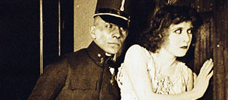
Blind Husbands
1919 -
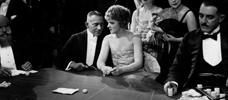
Foolish Wives
1922 -
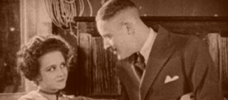
Merry-Go-Round
1923 -
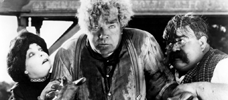
Greed
1924 -
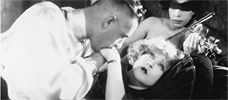
The Merry Widow
1925 -

The Wedding March
1928 -
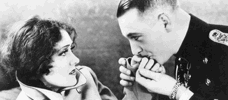
Queen Kelly
1929 -
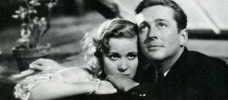
Hello, Sister!
1933
We don’t do comments anymore, but you may contact us here or find us on Twitter or Facebook.



